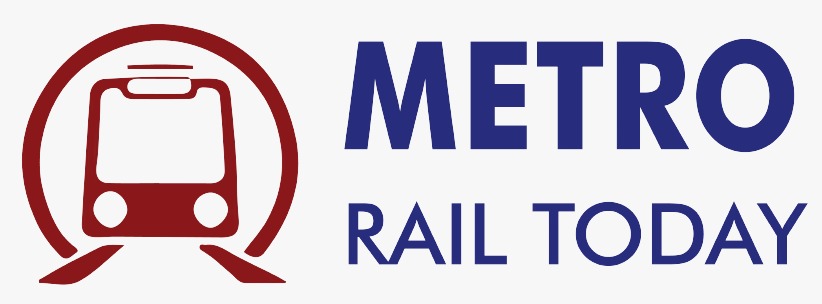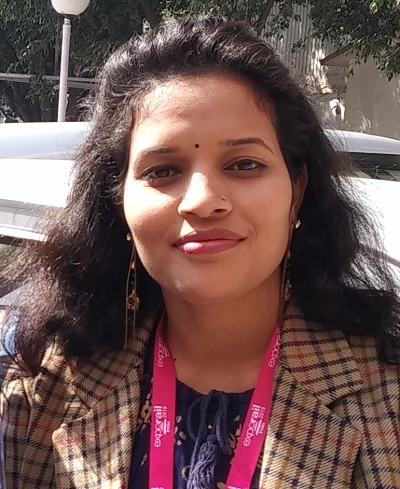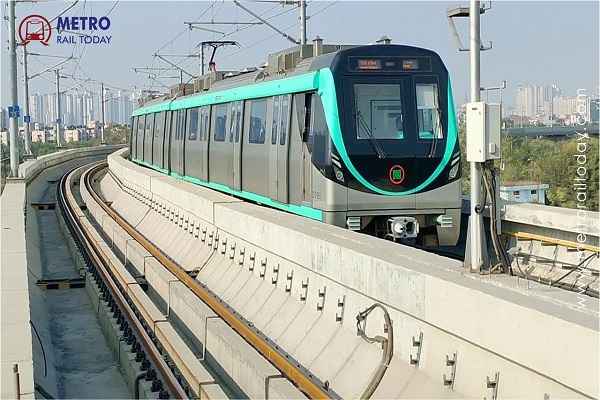 Ayesa India wins Design Consultancy Contract for Noida Metro Aqua Line Extension
Ayesa India wins Design Consultancy Contract for Noida Metro Aqua Line Extension Vossloh Cogifer bags Track Infrastructure Contract for Delhi Metro Phase 4 Corridors
Vossloh Cogifer bags Track Infrastructure Contract for Delhi Metro Phase 4 Corridors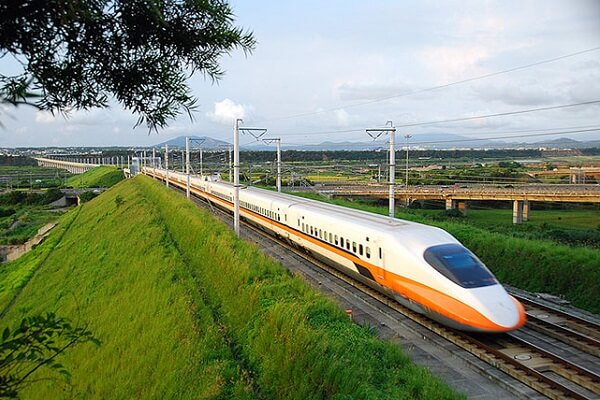 Railway finalised revised alignment for ₹16,000-crore Pune–Nashik Semi High-Speed Rail Corridor
Railway finalised revised alignment for ₹16,000-crore Pune–Nashik Semi High-Speed Rail Corridor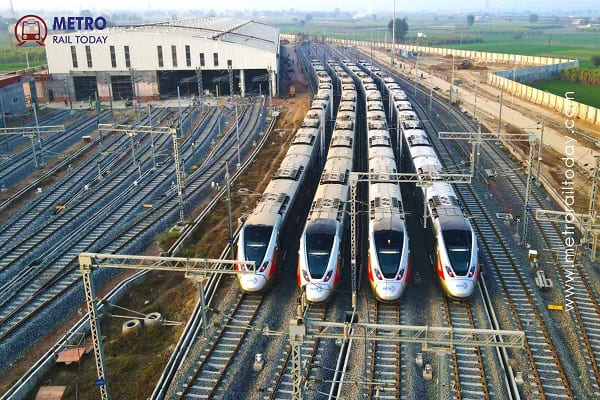 India’s First High-Speed, Signalling-Integrated CMV launched for Namo Bharat RRTS Corridor
India’s First High-Speed, Signalling-Integrated CMV launched for Namo Bharat RRTS Corridor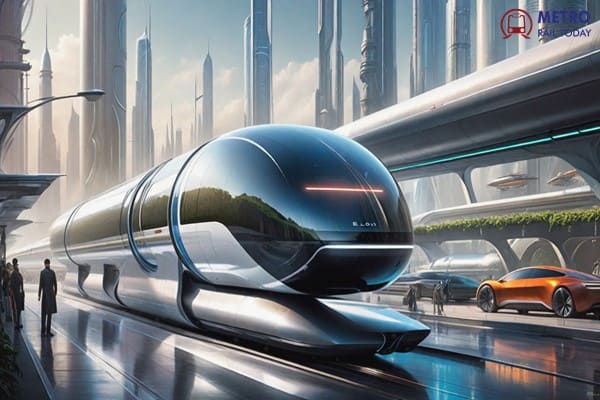 TuTr Hyperloop secures First-Ever Order from Deendayal Port Authority
TuTr Hyperloop secures First-Ever Order from Deendayal Port Authority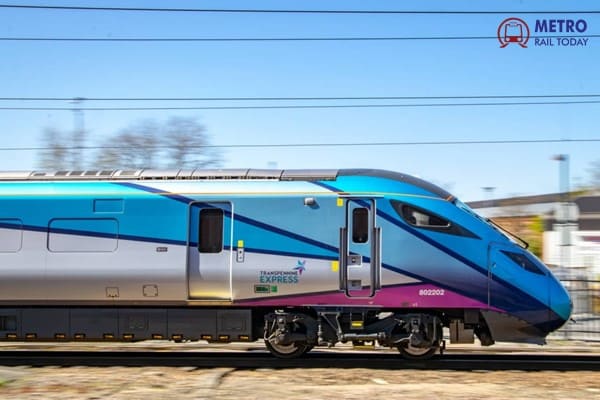 BEML bags ₹157 Crore Order from Loram Rail for Switch Rail Grinding Machines
BEML bags ₹157 Crore Order from Loram Rail for Switch Rail Grinding Machines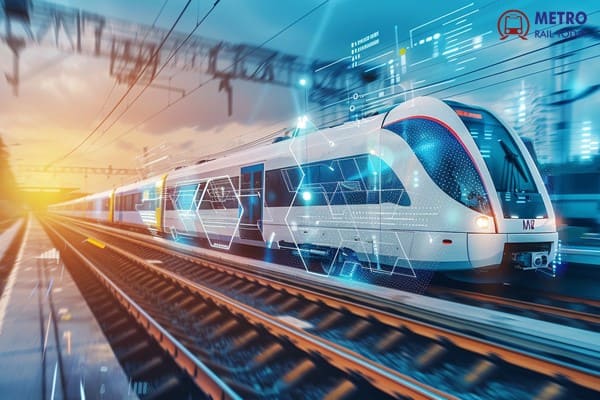 MxV Rail and KRRI forge Global Research Alliance to accelerate Next-Generation Rail Technologies
MxV Rail and KRRI forge Global Research Alliance to accelerate Next-Generation Rail Technologies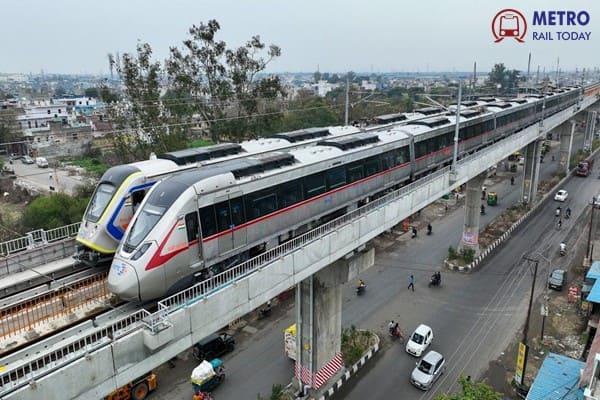 Uttarakhand seeks Pre-Feasibility Study for Meerut-Haridwar-Rishikesh RRTS Corridor
Uttarakhand seeks Pre-Feasibility Study for Meerut-Haridwar-Rishikesh RRTS Corridor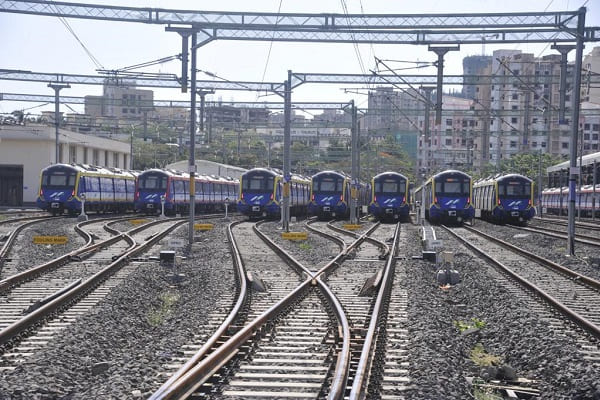 RIFTEK achieves major milestones in partnership with Indian Metro Rail Systems
RIFTEK achieves major milestones in partnership with Indian Metro Rail Systems Egypt all set to launch Alexandria Metro Phase 1 by 2026
Egypt all set to launch Alexandria Metro Phase 1 by 2026
Engineers Day Special: Engineers’ Role in Developing Metro Rail Projects in India
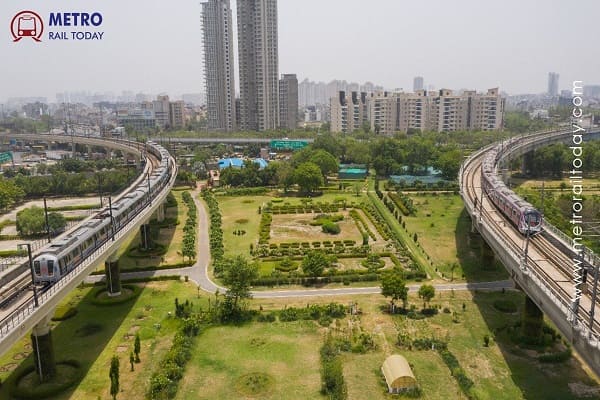
Metro rail projects are one of the most important components of urban transportation infrastructure in India. They provide a fast, reliable, safe, and environmentally friendly mode of transport for millions of commuters across various cities. Metro rail projects also contribute to the economic growth, social development, and urban planning of the regions they serve. However, developing metro rail projects is not an easy task. It requires a lot of planning, design, construction, and operation of complex systems that involve multiple disciplines, stakeholders, and challenges. Engineers play a vital role in every stage of metro rail project development, from feasibility studies to commissioning and maintenance.
Planning and Design
The planning and design phase of metro rail projects involves conducting feasibility studies, preparing detailed project reports, obtaining approvals and clearances, selecting routes and alignments, designing stations and depots, choosing rolling stock and signalling systems, estimating costs and revenues, and arranging financing and contracts. Engineers from various fields such as civil, electrical, mechanical, signalling, communication, geotechnical, environmental, and transportation are involved in this phase. They use their technical knowledge and skills to analyse the existing and future demand for metro services, assess the technical and financial viability of the project, optimise the alignment and station locations, ensure safety and security standards, minimise environmental and social impacts, and coordinate with various authorities and agencies.
Some examples of notable and challenging metro rail projects in India that required extensive planning and design are:
- Delhi Metro: The Delhi Metro is the largest and oldest metro system in India, covering 530 km with 10 lines and 285 stations. It is also the first metro system in India to be certified by the United Nations as a clean development mechanism project for reducing greenhouse gas emissions. The planning and design of the Delhi Metro involved overcoming various challenges such as land acquisition, resettlement and rehabilitation, heritage conservation, traffic management, tunneling under congested areas, seismic considerations, interoperability of different systems, and integration with other modes of transport.
- Kolkata Metro: The Kolkata Metro is the first metro system in India and the first underground metro system in South Asia4. It covers 48 km with 5 lines and 38 stations. The planning and design of the Kolkata Metro involved dealing with various challenges such as high-water table, soft soil conditions, narrow streets, dense population, historical buildings, archaeological sites, religious structures, political unrest, and frequent strikes.
- Mumbai Metro: The Mumbai Metro is one of the most ambitious metro projects in India, aiming to cover 337 km with 14 lines and 337 stations by 2026. It is also one of the most complex metro projects in India, involving multiple agencies, contractors, consultants, technologies, standards, and funding sources. The planning and design of the Mumbai Metro involved addressing various challenges such as high ridership demand, limited land availability, high real estate prices, coastal regulations, environmental clearances
- Ahmedabad Metro: The Ahmedabad Metro is one of the newest metro systems in India. It covers 68 km with 2 lines and 40 stations. It is also one of the first metro systems in India to use metrolite technology for low-cost and low-capacity corridors. The planning and design of the Ahmedabad Metro involved overcoming various challenges such as land acquisition delays,
- Hyderabad Metro: The Hyderabad Metro is one of the largest public-private partnership metro projects in India. It covers 67 km with 3 lines and 57 stations. It is also one of the first metro systems in India to use communication-based train control technology for high-frequency operations. The planning and design of the Hyderabad Metro involved tackling various challenges such as financial viability,
- Bangalore Metro: The Bangalore Metro is one of the fastest-growing metro systems in India. It covers 69 km with 2 lines and 45 stations. It is also one of the first metro systems in India to use ballastless tracks for noise reduction. The planning and design of the Bangalore Metro involved facing various challenges such as geological variations,
Construction
The construction phase of metro rail projects involves executing the civil works such as earthwork, foundation work, structural work, track work, and station work; installing the electrical works such as power supply, traction, lighting, ventilation, and air conditioning; installing the mechanical works such as elevators, escalators, pumps, and fire-fighting systems; installing the signalling works such as train control, communication, and surveillance systems; testing and commissioning the systems and equipment; and conducting trial runs and safety audits. Engineers from various fields such as civil, electrical, mechanical, signalling, communication, and safety are involved in this phase. They use their technical knowledge and skills to supervise the construction activities, ensure quality and safety standards, resolve technical issues, coordinate with contractors and suppliers, and monitor the progress and performance of the project.
Some examples of notable and challenging metro rail projects in India that required extensive construction are:
- Chennai Metro: The Chennai Metro is one of the most advanced metro systems in India, covering 189 km with 3 lines and 52 stations. It is also one of the first metro systems in India to use standard gauge tracks for higher speed and capacity. The construction of the Chennai Metro involved overcoming various challenges such as hard rock formations, high water table, coastal conditions, underground utilities, archaeological findings, and cyclones.
- Kochi Metro: The Kochi Metro is one of the most innovative metro systems in India, covering 27 km with 1 line and 22 stations. It is also one of the first metro systems in India to use solar power for meeting its energy needs. The construction of the Kochi Metro involved dealing with various challenges such as land acquisition, resettlement and rehabilitation, environmental clearances, social acceptance, and labour issues.
- Lucknow Metro: The Lucknow Metro is one of the fastest-built metro systems in India, covering 23 km with 1 line and 21 stations. It is also one of the first metro systems in India to use driverless technology for automatic train operation. The construction of the Lucknow Metro involved addressing various challenges such as heritage conservation, traffic management, tunneling under congested areas, and integration with other modes of transport.
- Nagpur Metro: The Nagpur Metro is one of the most eco-friendly metro systems in India, covering 38 km with 2 lines and 38 stations. It is also one of the first metro systems in India to use regenerative braking for energy saving and metrolite technology for low-cost and low-capacity corridors. The construction of the Nagpur Metro involved tackling various challenges such as land acquisition delays, geological variations, environmental clearances, and public awareness.
- Pune Metro: The Pune Metro is one of the newest metro systems in India. It covers 32 km with 2 lines and 30 stations. It is also one of the first metro systems in India to use broad gauge tracks for higher speed and capacity. The construction of the Pune Metro involved facing various challenges such as land acquisition, resettlement and rehabilitation, traffic management, tunneling under congested areas, and integration with other modes of transport.
Operation and Maintenance
The operation and maintenance phase of metro rail projects involves running the trains and stations according to the schedule and demand, providing customer service and security, managing revenue and expenditure, maintaining the assets and equipment, upgrading the systems and technology, and ensuring safety and reliability. Engineers from various fields such as electrical, mechanical, signalling, communication, and safety are involved in this phase. They use their technical knowledge and skills to operate the trains and stations efficiently and effectively, provide customer satisfaction and comfort, manage financial viability and sustainability, maintain quality and performance standards, upgrade and innovate the systems and technology, and ensure safety and reliability of the project.
Some examples of notable and challenging metro rail projects in India that required extensive operation and maintenance are:
- Gurugram Rapid Metro: The Gurugram Rapid Metro is one of the first private metro systems in India. It covers 12 km with 1 line and 11 stations. It is also one of the first metro systems in India to use third rail power supply for aesthetic reasons. The operation and maintenance of the Gurugram Rapid Metro involved overcoming various challenges such as financial viability, ridership demand, operational efficiency, customer satisfaction, asset management, and safety compliance.
- Hyderabad Metro: The Hyderabad Metro is one of the largest public-private partnership metro projects in India. It covers 67 km with 3 lines and 57 stations. It is also one of the first metro systems in India to use communication-based train control technology for high-frequency operations. The operation and maintenance of the Hyderabad Metro involved dealing with various challenges such as revenue generation, ridership growth, operational cost reduction, customer service improvement, asset optimization, and safety enhancement.
- Jaipur Metro: The Jaipur Metro is one of the first metro systems in India to use indigenous rolling stock. It covers 12 km with 1 line and 11 stations. It is also one of the first metro systems in India to use ballastless tracks for noise reduction. The operation and maintenance of the Jaipur Metro involved addressing various challenges such as revenue shortfall operational efficiency, customer satisfaction, asset management, and safety compliance.
Conclusion
Metro rail projects are one of the most important components of urban transportation infrastructure in India. They provide a fast, reliable, safe, and environmentally friendly mode of transport for millions of commuters across various cities. Metro rail projects also contribute to the economic growth, social development, and urban planning of the regions they serve. However, developing metro rail projects is not an easy task. It requires a lot of planning, design, construction, and operation of complex systems that involve multiple disciplines, stakeholders, and challenges. Engineers play a vital role in every stage of metro rail project development, from feasibility studies to commissioning and maintenance. They use their technical knowledge and skills to analyse the existing and future demand for metro services, assess the technical and financial viability of the project, optimise the alignment and station locations, ensure safety and security standards, minimise environmental and social impacts, and coordinate with various authorities and agencies. They also supervise the construction activities, ensure quality and safety standards, resolve technical issues, coordinate with contractors and suppliers, and monitor the progress and performance of the project. They also operate the trains and stations efficiently and effectively, provide customer satisfaction and comfort, manage financial viability and sustainability, maintain quality and performance standards, upgrade and innovate the systems and technology, and ensure safety and reliability of the project.
Engineers are therefore the backbone of metro rail projects in India. They are responsible for making metro rail projects a reality and a success. They are also the ones who face the most challenges and difficulties in developing metro rail projects. They have to deal with various technical, financial, social, environmental, and political issues that arise during the project lifecycle. They have to work under tight deadlines, budget constraints, quality requirements, and safety regulations. They have to cope with the changing needs and expectations of the customers and stakeholders. They have to constantly learn new skills and technologies to keep up with the evolving trends and standards in the metro rail industry.
Engineers are therefore also the heroes of metro rail projects in India. They are the ones who make metro rail projects possible and beneficial for the people and the society. They are the ones who create value and impact through their work. They are the ones who deserve recognition and appreciation for their contribution to metro rail projects in India.
